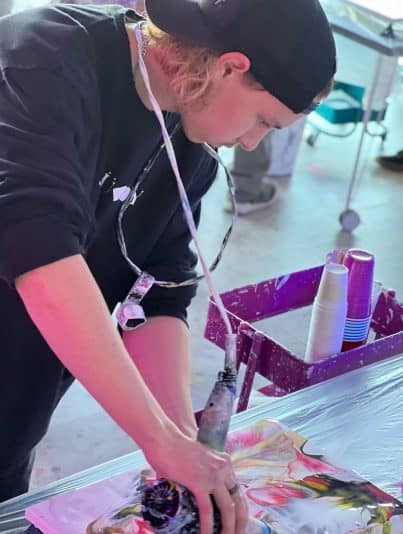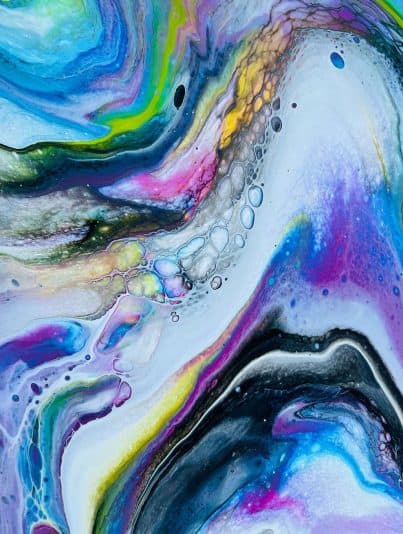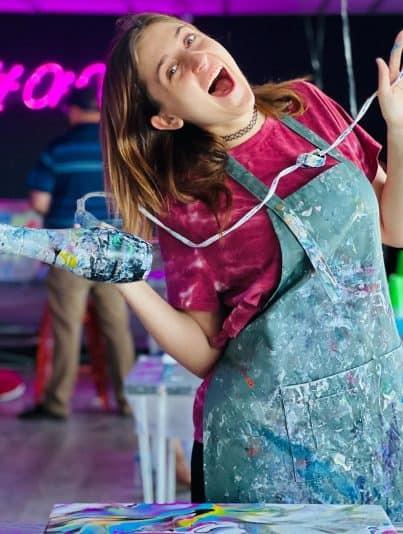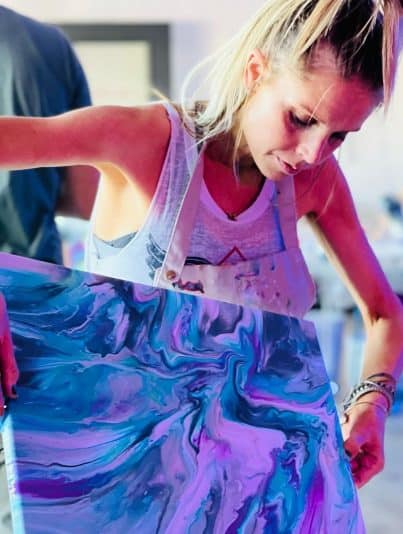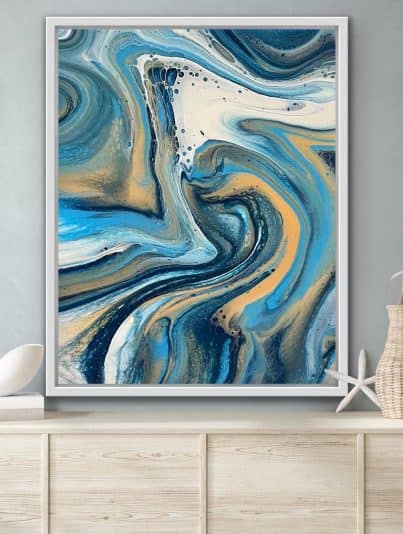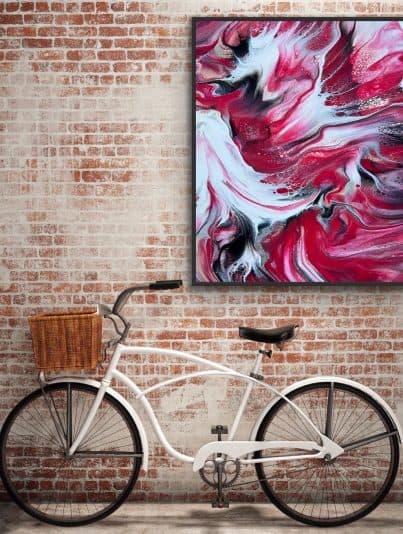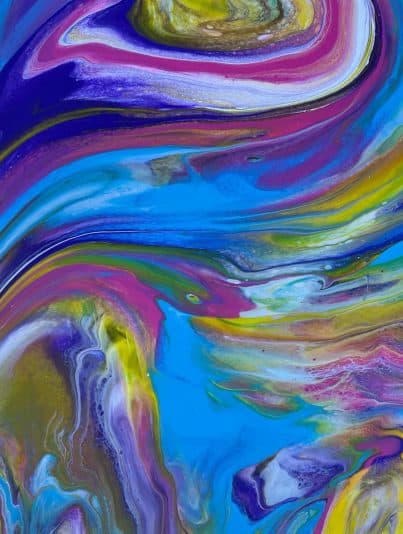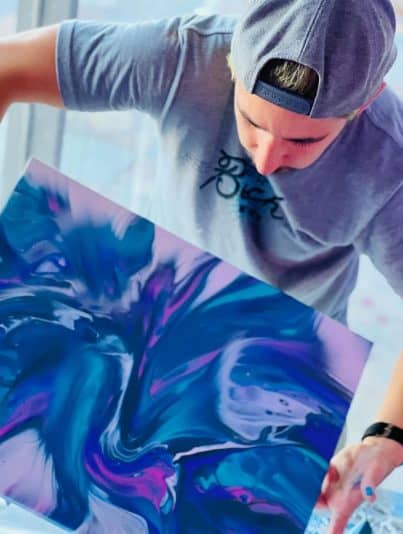“Art is the expression of the profoundest of thoughts in the simplest of ways.” - Albert Einstein
Although Einstein was neither a traditional artist nor a psychologist, his quote illustrates near perfectly the heart of therapeutic artistry. For many years people have sought respite from their mental turmoil behind a paintbrush, a pen, an instrument, or even through the movement of their body.
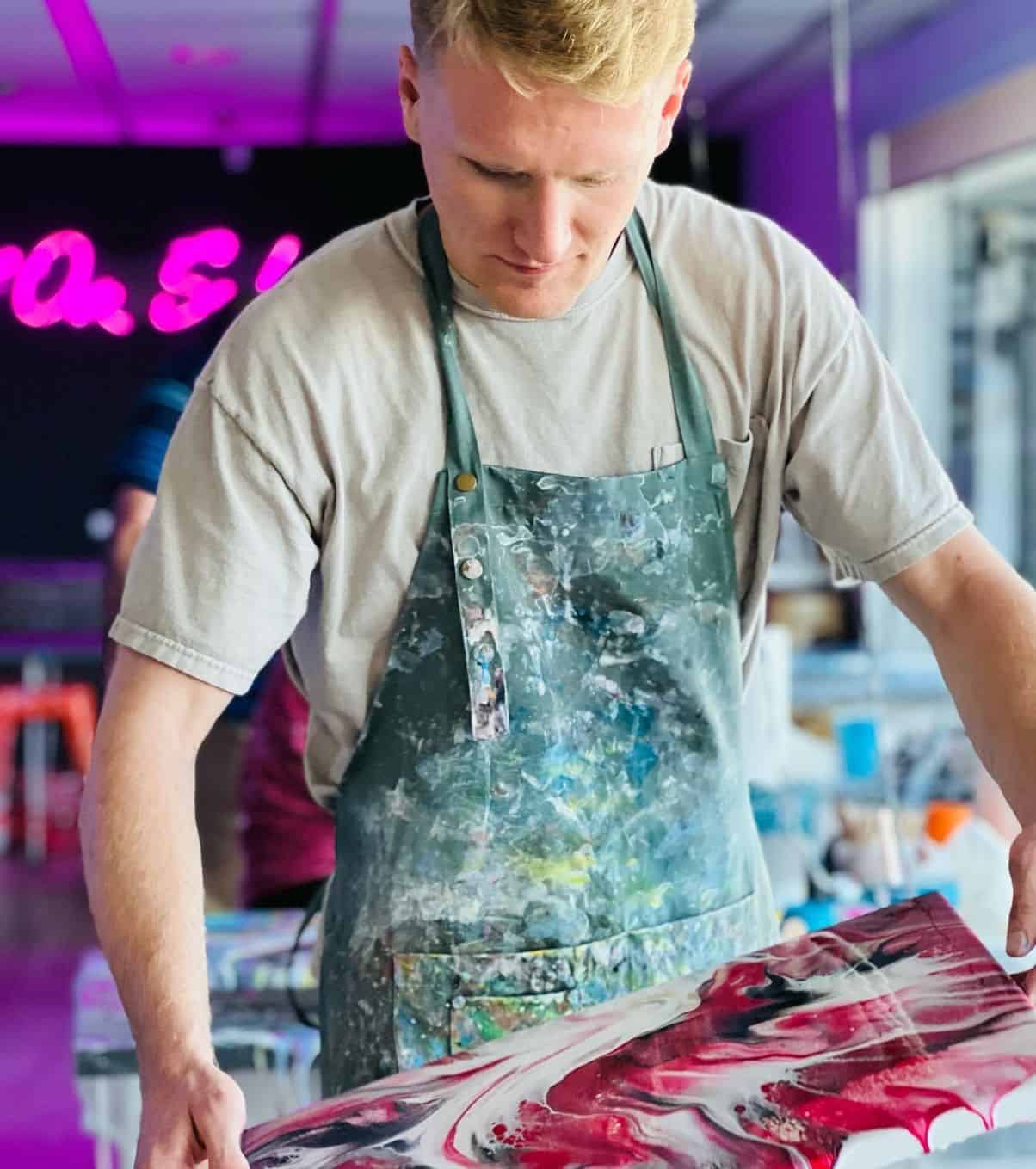
It is this natural desire to create and the perceived link between the creator’s emotions and the art they produce that has informed entire disciplines of therapeutic practice focused on artistic expression as a means of understanding and healing the troubled mind. One such practice of art based therapy, and perhaps the most diverse and explorative, is called expressive arts therapy.
What Is Expressive Arts Therapy
Based on the theory that humans have an innate desire to create and be creative, expressive arts therapy is the practice of combining psychology and the creative process in order to foster growth, healing, and recovery. Unique in its approach, expressive arts therapy relies on the utilization of multiple arts forms, commonly referred to as intermodally, as a tool to initiate progress in therapy. Unlike art therapy, expressive arts therapy combines the benefits of multiple art forms like music, theater, dance, poetry, painting, and other artistic forms in order to explore, observe, and learn throughout the therapeutic process.
In practice expressive arts therapies can look very different as they are often contingent on the interests and drives of the patient with their therapist as a guide towards progress. That being said, at the core of all expressive arts therapies is the concept of “poiesis.” This concept, derived from the Greek word for poetry, refers to the process of changing your focus from the “real” world towards the imaginative, creative, and emotional “realms” in the pursuit of making art in order to access the internal self. Expressive arts therapists understand that a lot of art comes from a deep emotional place and that through creation, the path to expression and healing can be easier to access. The creative process can also be the road to recovery.
Expressive arts therapy is so compelling because when practically applied, it can look dramatically different from patient to patient. Every person’s path to recovery is unique and the more specifically and personally tailored their care is, the better their chances of experiencing lasting change.
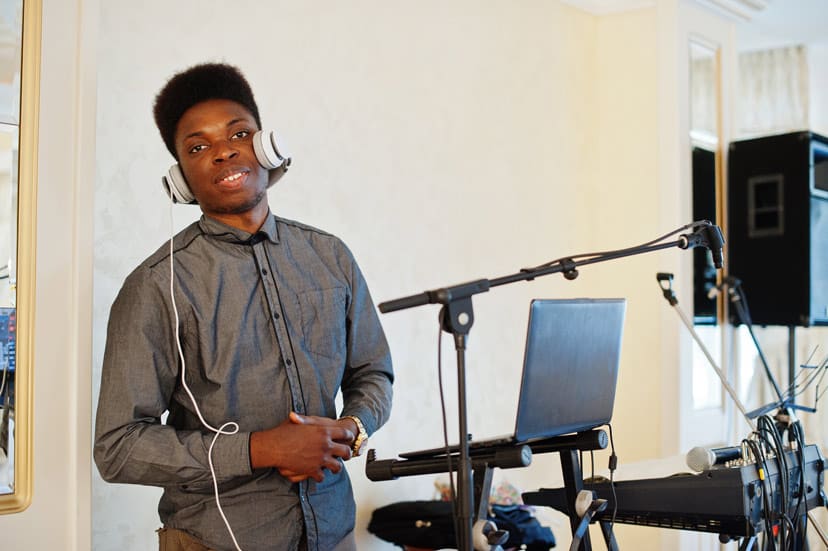
Different Types of Expressive Arts Therapy
Although the definition of art is nebulous, there are four main subgenres that expressive art therapists and their patients tend to work from: music, traditional mediums, dance and body movement, written/ spoken word, and as a bonus there are some programs that include theater.
Music – Music can refer to anything from making music, singing, or even learning a new instrument.
Traditional Mediums – Traditional mediums refer to the artistic mediums that the mind immediately goes to: painting, drawing, coloring, sketching, sculpting, collage, etc. Dance & Body Movement – this can include a variety of dance forms, improvisational movement routines, or other bodily exercises.
Written & Spoken Word – Most often poetry, written and spoken word can include, poetry, short stories, fictional writing, journaling, non-fictional writing, as well as the performative reading of one’s writing.
Theater – Theater can include improvisational acting, stand-up comedy, and even the embodiment and performance of characters from a script.
This list is not all encompassing of the variety of therapies offered by expressive arts therapy, but gives a good overview of the variety of options that are available to patients looking into this therapeutic method.
Expressive Arts Therapy in Process & Practice
Despite the well researched benefit of expressive arts therapies, it can be difficult to conceptualize what exactly it is that happens in expressive arts therapy that is so beneficial.
Although expressive arts therapy can differ drastically from practice to practice, there are underlying structures that frame the practice of this therapeutic approach.
In expressive art therapy, a patient is encouraged to create in the medium of their choice or across multiple artistic mediums. As they create, their therapist is mindful of their process, their behaviors, and impulses, and encourages discussion about the experience of creation while also testing the waters for conversation surrounding more serious topics. Because expressive arts therapy is hinged on the idea that art is an extension of the mind’s deeper emotions, thoughts, and experiences, it is important for the therapist to not only pay mind to their patient, but also to the creative output of the individual.
Throughout the process of creation, the therapist encourages their patient to communicate their feelings and frustrations with the creative process, and that can be used to open up larger discussions highlighting the greater problems and issues that the patient might be dealing with. Much as expressive art therapy is based on the idea that the process is just as, if not more, important than the conclusion. The goal of expressive art therapy is to use the creative process as a way of accessing topics, feelings, and conversations that might otherwise be difficult to approach, and then utilize the creative process as a road map for therapeutic recovery.
Additionally, by giving patients the opportunity to create while engaged in therapy, it can distract them from the stigmas they might feel about engaging in traditional talk therapy, and can instill a sense of pride, control, and ownership in their therapeutic process as it is their creative process that drives the sessions and produces the end result of a work of art and ideally, progress towards recovery.
In fact, as a way to communicate and explore together. A benefit of creative arts therapy is that it does not require the therapist or the patient to have high levels of artistic skill. The learning process as well as the creative process and how the patient navigates through those processes are the true focus of the expressive arts therapy, not the end result.Call To Talk To One Of Our Expressive Arts Therapy Professionals Today!
What Conditions Does Expressive Arts Therapy Treat?
Expressive art therapy can be utilized to treat a variety of mental health conditions, and has been shown to be an effective complementary treatment for people going through treatment of severe physical illnesses. Though not all encompassing, the following are some of the most common mental health disorders and conditions that can be treated using expressive arts therapy:
- Anxiety
- ADHD
- Bereavement/ Grief
- Traumatic Brain Injuries
- Chronic Medical Conditions
- Depression
- Developmental Disorders
- Eating Disorders
- Emotional Disturbances
- Interpersonal Deficits
- Self-Esteem & Confidence Issues
- PTSD
- Dementia
- Addiction
Expressive Arts Therapy: Research & Background
Although not as commonly used as other therapeutic methods, expressive arts therapy is by no means a new approach to mental health care. First developed at Lesley University in the early 1970’s, expressive arts therapy was created to integrate established psychological frameworks with the long recognized human desire to create art as a means of self expression.
It was paramount to those at Lesley University that this therapeutic model be “indigenous to art,” meaning that the exploration and creation of art would always be at the center of the practice, and that psychological progress would be the outcome and benefit. In expressive arts therapy, the therapist is less in a position of power and viewed as more of a “companion” to join the patient on their self exploration, asking questions, encouraging exploration, troubleshooting, challenging the patient to explore their own mind and experiences in new ways, but not outright leading them to a conclusion.
Since its creation in the 1970’s there has been ample research on the effectiveness and utility of expressive arts therapy. Multiple studies have demonstrated that utilizing expressive arts in therapy offers a variety of benefits including: increased confidence, catharsis, symptom reduction, better communication, improved outlook on personal circumstances, increased understanding of self, as well as personal growth.
A 2015 study found that expressive arts therapy reduces the level of stress of hospitalized children and was met with positive reviews by both staff and parents. The expressive arts therapeutics were found to reduce stress and improve the overall affect of the children.
In another 2015 study, it was found that by using expressive arts therapy in a group therapy setting, that patients reported higher feelings of catharsis than those who were not a part of expressive arts therapies. This feeling of ‘catharsis’ was defined as relief, and the stabilization of emotions.
A study from 2021 found that expressive arts therapy also benefits older adults in nursing homes by improving their ability to connect and collaborate with other patients, their families, and the staff, leading to better quality of life.
Additionally, there is a myriad of research outlining the benefits of “art therapy.” While a different therapeutic practice, this research does demonstrate the effectiveness of the singular elements of expressive arts therapy which when combined, are only more effective.
Expressive Arts Therapy in Scottsdale, Arizona
Let the team at our Scottsdale Art Therapy guide your journey.
Differences From Expressive Arts Therapy And Other Therapy Methods
Expressive arts therapy is fairly unique as a method of mental health care. It differs from other therapeutic models drastically in the fact that it does employ the creation of art as the primary vector of communication and patient discovery. What’s more is that expressive arts therapy utilizes the process of creation as a vehicle for discovery and discussion. This means that while the therapist may touch on topics, or use what the person is creating to ask questions and discuss difficult things, the course of therapy is largely reliant on the creative process and where it takes the conversations and what is uncovered.
With many therapeutic processes that rely on patient guided discussion, there is an element of the therapists more or less guiding where the conversation goes in order to get to the root of the problem. In expressive arts therapy, the journey towards discovering the root of the patient's issues are just as important as the final outcomes itself. By focusing so much on the journey to self discovery, patients can learn more about what they can do personally to express and even address their own issues moving forward without clinical help. By making the process of healing and the artistic process parallel, it gives patients a structured learning opportunity to develop the skills they need to maintain their recovery.
It should however be noted that expressive arts therapy does have a close relative in the more commonly known “arts therapy.” While they sound extremely similar, “art therapy” and “expressive arts therapy” are distinctly different practices. The most distinct difference between them is the multimodality of expressive arts therapy. Most art therapy practices focus around a single mode of artistic expression, i.e.: paint, dance, poetry.
With expressive art therapy patients have the option to flow between different modalities, exploring and trying different mediums in order to express themselves. This allows the benefits of the different mediums to be available to the patient and for the therapist to have different ways to broach what unique issues the patient might be dealing with.
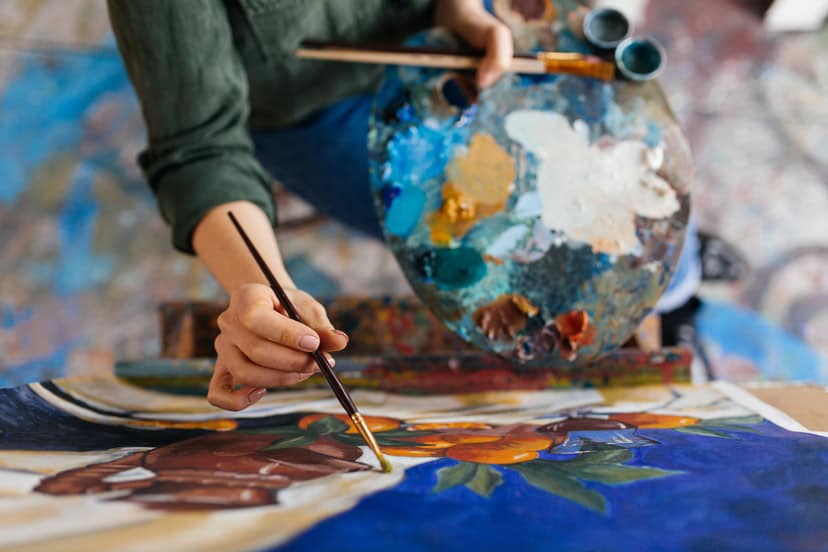
The Benefits of Expressive Arts Therapy
As touched upon earlier, expressive arts therapy has a long list of disorders that it can be utilized to address. In doing so, expressive arts therapy can beneficial in a number of ways including:
Encourages exploration of the unconscious – While the patient may be aware that they are creating art for therapy, oftentimes the things they’re feeling are difficult to express through words. By making art, the patient can begin to unravel these unsayable things that may be troubling them and the therapist can pick up on that cue and help the patient put that problem into words so that they might address it.
Informs direction of therapy – It can be challenging for therapists to decide on the direction of therapy. With expressive arts therapy, the direction of the therapy is, in part, directed by the art and the process that the patient is using to create that art.
Externalizes the internal – Emotional expression can be hard for some people. Expressive arts therapy may provide patients a way of taking what they feel inside and externalizing those feelings in a way that is approachable and possible for them.
Learn New Skills & Gain Confidence – Expensive arts therapy is particularly apt for allowing patients to gain confidence in both themselves, their expression, and their ability to create something worthwhile. Working through their mental health issues through creating art across multiple mediums, patients are able to learn new skills, gain a unique sense of perspective on processes and outcomes, and even become more confident in their ability to persevere through therapy towards a common goal of recovery. The artistic process is meant to mirror and support the healing process.
The Limitations/Downsides of Expressive Arts Therapy
While expressive arts therapy has many benefits, it is not a cure-all and, like any therapeutic model, will not fit the needs of all people. Furthermore, while expressive arts therapy is useful as a method of emotional exploration, it does not address problems that also have a physical element such as addiction.
It can be extremely useful to pair expressive arts therapy with other therapeutic programming in order to assure that all patient needs are met. There is also debate in the research space about the value and validity of qualitative results in comparison with quantitative data, that is, results that are not based on numerical data. Most studies attesting to the validity of expressive arts therapy are based on qualitative data which is contingent on researching interpretation and therefore is slightly more prone to bias.
Creating Recovery at Pinnacle Peak Recovery
At Pinnacle Peak Recovery we offer care for a variety of conditions from addiction to mental health challenges. In doing so, we can provide a wide array of treatment options to fit the needs of whatever patients come through our doors. Expressive arts therapy is one of the therapeutic programs that we offer.
Call us at 866-377-4761 to learn how you can join us at Pinnacle Peak and begin the process of recovery through expressive arts therapy.
FAQs About Expressive Arts Therapy
What is expressive art therapy used for?
Expressive arts therapy is utilized to address a number of different mental disorders as well as be a way to process the effects of severe and chronic physical disorders that impact an individuals well being. It has multiple practical uses but is overall a form of mental healthcare.
What are 3 examples of expressive therapies?
There are three very popular forms of expressive therapy in use today: music making, dance, and traditional arts like painting or drawing.
What is the difference between art therapy and expressive arts therapy?
In art therapy the practitioner or therapist focuses on one art form. This could be dance therapy, painting therapy, etc. In expressive arts therapy, the practitioner and the patient explore a variety of artistic mediums and utilize their differences in order to understand and address the different facets of the patient's underlying issues.
What is the theory of expressive arts therapy?
At the core of all expressive arts therapies is the concept of “poiesis.” This concept, derived from the Greek word for poetry, refers to the process of shifting your focus from the “real” world towards the imaginative, creative, and emotional realms in the pursuit of making art in order to reach the internal self. Expressive arts therapists understand that a lot of art comes from a deep emotional place and that through creation, the path to expression and healing can be easier to access – and thus lead to the road to recovery.

